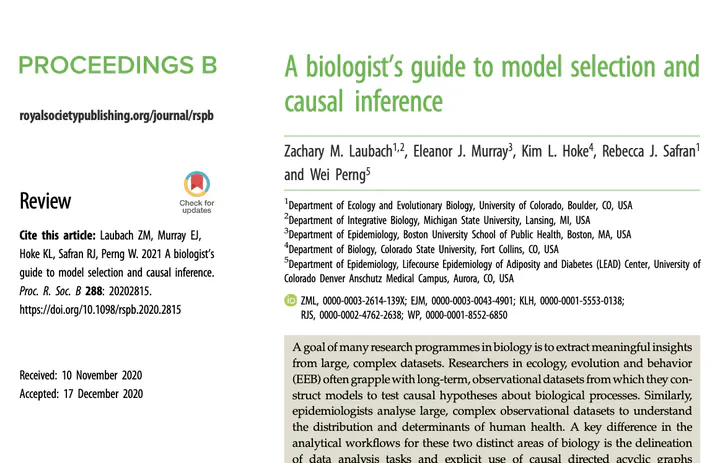A biologist’s guide to model selection and causal inference
Jan 27, 2021·
,
,
,
,
·
0 min read
Zachary M. Laubach
Eleanor J. Murray
Kim L. Hoke
Rebecca J. Safran
Wei Perng

Abstract
A goal of many research programmes in biology is to extract meaningful insights from large, complex datasets. Researchers in ecology, evolution and behavior (EEB) often grapple with long-term, observational datasets from which they construct models to test causal hypotheses about biological processes. Similarly, epidemiologists analyse large, complex observational datasets to understand the distribution and determinants of human health. A key difference in the analytical workflows for these two distinct areas of biology is the delineation of data analysis tasks and explicit use of causal directed acyclic graphs (DAGs), widely adopted by epidemiologists. Here, we review the most recent causal inference literature and describe an analytical workflow that has direct applications for EEB. We start this commentary by defining four distinct analytical tasks (description, prediction, association, causal inference). The remainder of the text is dedicated to causal inference, specifically focusing on the use of DAGs to inform the modelling strategy. Given the increasing interest in causal inference and misperceptions regarding this task, we seek to facilitate an exchange of ideas between disciplinary silos and provide an analytical framework that is particularly relevant for making causal inference from observational data.